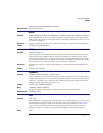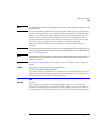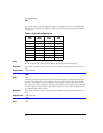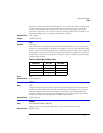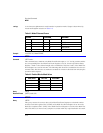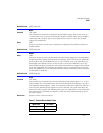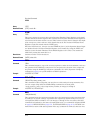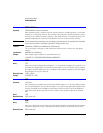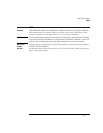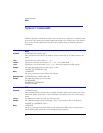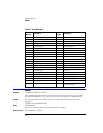
4-13
Root Level Commands
SERial
Restrictions In TDR mode (software revision A.06.00 and above), the optional channel argument is not
allowed.
Example 10 OUTPUT 707;”:RUN”
SERial
Command :SERial {FRAMe | LMODule | RMODule},<string>
This command sets the serial number for the analyzer frame or module. The serial number is
entered by Agilent Technologies. Therefore, setting the serial number is not normally
required unless the analyzer is serialized for a different application. <string> is a ten-charac-
ter alphanumeric serial number enclosed with quotation marks. The analyzer’s serial number
is part of the string returned for the *IDN? query, described in Chapter 3, “Common Com-
mands”.
Example This example sets the serial number for the analyzer's frame to “1234A56789”.
10 OUTPUT 707;":SERIAL FRAME,""1234A56789"""
Query :SERial? {FRAMe | LMODule | RMODule}
Returned Format [:SERial] <string><NL>
Example 10 OUTPUT 707;":SERIAL? FRAME"
SINGle
Command :SINGle
This command causes the analyzer to make a single acquisition when the next trigger event
occurs. It should be followed by *WAI, *OPC, or *OPC? in order to synchronize data acquisi-
tion with remote control.
Example 10 OUTPUT 707;":SINGLE"
STOP
Command :STOP [CHANnel<N>]
This command causes the analyzer to stop acquiring data for the active display. If no channel
is specified, all active channels are affected. To restart the acquisition, use the RUN or SINGle
command. <N> is an integer, 1 through 4.
Restrictions In TDR mode (software revision A.06.00 and above), the optional channel argument is not
allowed.
Example 10 OUTPUT 707;":STOP"
STORe:SETup
Command :STORe:SETup <setup_memory_num>
This command saves the current analyzer setup in one of the setup memories.
<setup_memory_num> is the setup memory number, an integer, 0 through 9.



